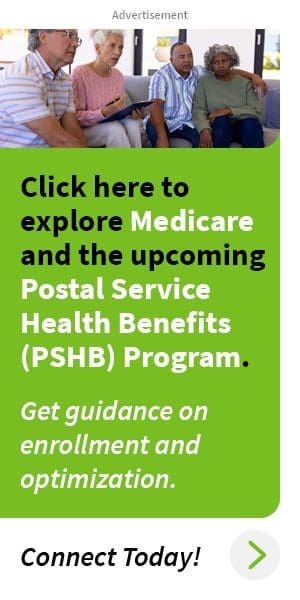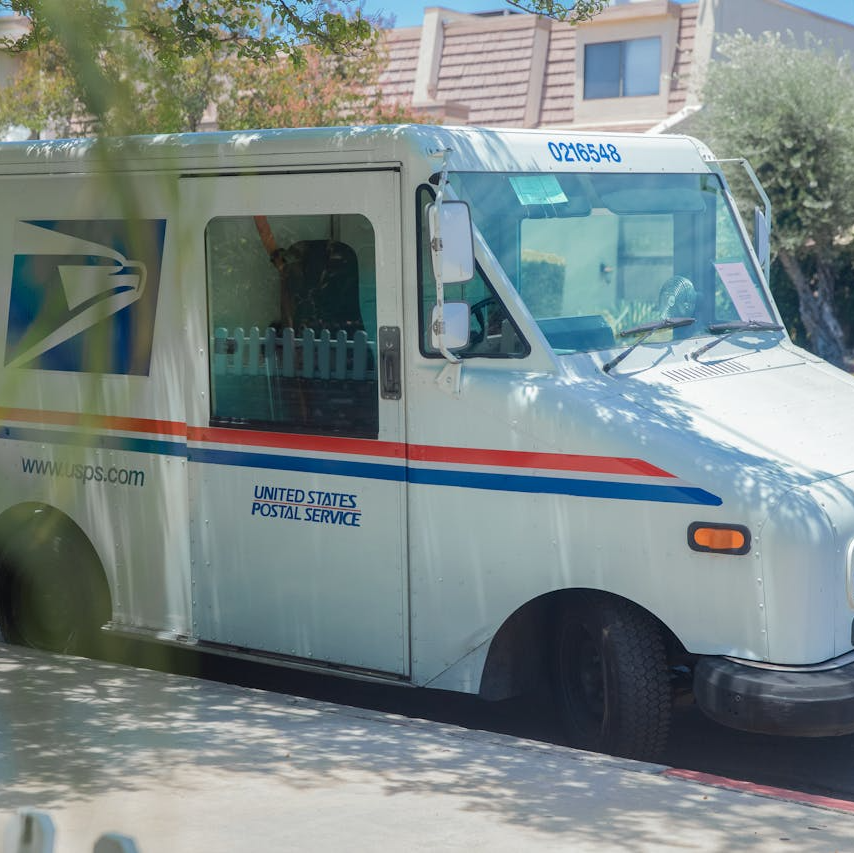Key Takeaways
-
The Postal Service Health Benefits (PSHB) program is specifically tailored for USPS employees, annuitants, and eligible family members, offering comprehensive health coverage and integration with Medicare.
-
Understanding PSHB’s costs, coverage options, and Medicare integration requirements can help you make informed decisions about your healthcare.
A New Era of Health Benefits for USPS
The Postal Service Health Benefits (PSHB) program is designed to meet the unique needs of USPS employees, annuitants, and their families. As of 2025, PSHB has replaced the Federal Employees Health Benefits (FEHB) program for postal workers. This transition brings new opportunities to optimize your healthcare coverage while maintaining familiar options like dental and vision plans under FEDVIP.
Whether you’re an active employee planning for retirement or an annuitant reviewing your healthcare options, PSHB offers a range of choices to suit your needs. Understanding the key features of this program is essential for maximizing your benefits.
Who’s Eligible for PSHB?
PSHB covers USPS employees, retirees, and their eligible family members. If you were already enrolled in an FEHB plan, you’ve likely been automatically transitioned to a corresponding PSHB plan. However, specific eligibility criteria still apply:
-
Active Employees: All USPS employees are eligible for PSHB coverage.
-
Retirees: USPS retirees must be enrolled in a PSHB plan to maintain health coverage, with some Medicare integration requirements.
-
Family Members: Eligible dependents include your spouse and children under 26 years of age.
-
Medicare-Eligible Members: If you’re eligible for Medicare Part A or B, you must enroll in Part B to retain PSHB benefits unless exempt.
Qualifying Life Events (QLEs) like marriage, divorce, or the birth of a child may allow you to make changes to your coverage outside of Open Season.
Costs and Contributions
Understanding the financial aspects of PSHB is crucial. The program’s cost structure includes premiums, deductibles, coinsurance, and copayments, with many plans offering competitive rates compared to similar coverage in the private sector.
Premiums and Government Contributions
The federal government covers approximately 70% of your PSHB premium, significantly reducing out-of-pocket costs. Your share depends on the coverage tier you select:
-
Self Only
-
Self Plus One
-
Self and Family
Deductibles and Copayments
Deductibles vary by plan type:
-
Low-Deductible Plans: $350-$500 in-network
-
High-Deductible Plans: $1,500-$2,000 in-network
Copayments are generally affordable and include:
-
Primary care visits: $20-$40
-
Specialist visits: $30-$60
-
Urgent care: $50-$75
-
Emergency room visits: $100-$150
Coinsurance
Coinsurance rates range from 10%-30% for in-network services and 40%-50% for out-of-network care, emphasizing the importance of choosing in-network providers to save on costs.
Medicare Integration: What You Need to Know
If you’re eligible for Medicare, integrating it with your PSHB coverage can provide significant cost savings and enhanced benefits. Here’s what you need to know:
-
Enrollment in Part B: Medicare-eligible annuitants and family members must enroll in Part B to maintain PSHB coverage unless exempt. This integration lowers your out-of-pocket costs for deductibles and copayments.
-
Part B Premium Reimbursement: Some PSHB plans offer partial reimbursements for Medicare Part B premiums, reducing your financial burden.
-
Prescription Drug Coverage: Medicare-eligible members are automatically enrolled in a Medicare Part D Employer Group Waiver Plan (EGWP) through their PSHB plan, providing comprehensive drug coverage.
Open Season: Your Opportunity to Make Changes
Each year, Open Season runs from mid-November to mid-December, allowing you to review and adjust your PSHB coverage. This period is your chance to:
-
Compare plans and premiums
-
Enroll in a new plan
-
Add or remove dependents
If you miss Open Season, changes can only be made during a QLE.
How PSHB Supports Your Healthcare Needs
PSHB plans are tailored to support USPS employees and retirees, offering:
-
Comprehensive Coverage: From preventive care to chronic disease management, PSHB ensures you’re covered.
-
Nationwide Access: Most plans include networks across the country, ideal for postal workers and retirees who may relocate.
-
Supplemental Benefits: Many plans offer vision, dental, and hearing coverage, as well as wellness programs to help you stay healthy.
Key Deadlines to Remember
Stay on top of important deadlines to ensure uninterrupted coverage:
-
Open Season: Mid-November to mid-December annually
-
Medicare Part B Enrollment: For those turning 65, the Initial Enrollment Period spans seven months (three months before your birthday month, your birthday month, and three months after).
-
QLE Changes: These can be made at any time during the year if you experience a qualifying event.
Mark these dates on your calendar and set reminders to stay ahead.
Tips for Selecting the Right PSHB Plan
With so many options, choosing the best plan can feel overwhelming. Here are some tips to simplify the process:
-
Assess Your Healthcare Needs: Consider your medical history, anticipated healthcare needs, and preferred providers.
-
Compare Costs: Look at premiums, deductibles, copayments, and coinsurance to estimate your total annual expenses.
-
Check the Provider Network: Ensure your preferred doctors and facilities are in-network to avoid higher out-of-pocket costs.
-
Evaluate Medicare Integration: If you’re Medicare-eligible, choose a plan that complements your Medicare coverage.
-
Use Available Resources: USPS provides tools and support to help you compare plans and make informed decisions.
Maximizing Your Benefits
PSHB plans offer several features to help you make the most of your healthcare:
-
Preventive Care: Most plans cover annual check-ups and screenings at no cost.
-
Wellness Incentives: Some plans reward you for healthy behaviors like getting a flu shot or completing a health assessment.
-
Telehealth Services: Access medical care remotely for added convenience.
-
Flexible Spending Accounts (FSAs): Use pre-tax dollars to pay for eligible healthcare expenses, reducing your taxable income.
Making the Transition to PSHB
For those transitioning from FEHB to PSHB, understanding the differences is critical. While many features remain similar, PSHB’s Medicare integration and tailored plans for postal workers set it apart. Take the time to review your new plan’s details and ensure it aligns with your healthcare needs.
Your Healthcare Decisions Matter
Navigating the Postal Service Health Benefits program doesn’t have to be complicated. By staying informed about your options, costs, and deadlines, you can take full advantage of the benefits available to you and your family. Whether you’re an active employee or a retiree, PSHB is here to support your health and well-being.










